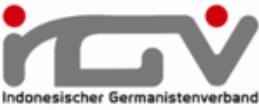ANALYSIS OF SCHREIBÜBUNGEN IN NETZWERK NEU A2 TEXTBOOKS
Abstract
Writing is one of the important skills in foreign language learning, in addition to listening, speaking, and reading. In learning writing skills, the terms Schreibaufgaben 'writing tasks' and Schreibübungen 'writing exercises' are known, as well as terms related to the function of writing, Schreiben als Ziel 'writing as a goal' and Schreiben als Mittel 'writing as another purpose'. Schreiben als Ziel is related to Aufgaben and Schreiben als Mittel is related to Übungen. However, in this study it is not distinguished between the two, therefore Schreibübungen includes Schreibaufgaben and Schreibübungen. Textbooks are one of the learning media to assist teaching and learning activities, so that learners understand and master learning materials more easily. Therefore, teachers need to be familiar with the textbooks that will be used as much as possible. The purpose of this research is to find out: (1) the types of Schreibübungen contained in the Netzwerk neu A2 textbook, and (2) the suitability of Schreibübungen offered in the textbook with the GER. In this research, the method applied is descriptive analysis which includes the process of collecting, compiling, and describing data which becomes the basis for drawing conclusions from the formulation of research problems. The results showed that: (1) in the Kursbuch Netzwerk neu A2 textbook there are 22 planning exercises; 36 developing exercises; five composing exercises; 11 free, creative writing exercises; and two communicative writing exercises, and (2) in the textbook there are 22 writing exercises that have conformity with A1 level, 50 exercises with A2 level, and four exercises with B1 level. Based on the results of this study, the author recommends that teachers should understand the various forms of Schreibübungen; develop writing exercises, and develop evaluation instruments for writing skills.
Keywords: GER, Netzwerk neu A2, SchreibübungenFull Text:
PDFReferences
Autor. (2019). Lehrwerk. wiktionary. [Online]. Accessed from: https://de.wiktionary.org/wiki/Lehrwerk.
_______. (2003). Europarat. Gemeinsamer europäischer Referenzrahmen für Sprachen - Raster Zur Selbstbeurteilung. [pdf]. Accessed from: http://europass.cedefop.europa.eu/de/resources/european-language- levels-cefr.
Ciepielewska, L. (2002). Die Bedeutung der Lehrwerkanalyse für den Modernen Fremdsprachenunterricht. Glottodidactica: An International Journal of Linguistics, 65.
Funk, H., Kuhn, C., Skiba, D., Spaniel-Weise, D., Wicke, R. E., & Brede, J. R. (2014). Deutsch Lehren Lernen 4 Aufgaben, Übungen, Interaktion. Munich. Langenscheidt.
Kast, B. (1999). Fertigkeit schreiben. Munich. Langenscheidt.
Klett-sprachen.de. (2020). Netzwerk neu. [Online]. Accessed from: https://www.klett-sprachen.de/netzwerk-neu-das-netzwerk-konzept/c-2857.
Lestari E. 2013. Development of Competency-Based Teaching Materials: In accordance with KTSP. Padang: Akademia Permata.
Moleong, L. J. (2017). Qualitative research methods. Bandung: PT Remaja Rosdakarya.
Trim, J., North B., Coste D., & Sheils, J. (2001). Gemeinsamer europäischer Referenzrahmen für Sprachen: lernen, lehren, beurteilen. Berlin, Munich. Langenscheidt.
Valachová, R. (2013). Erstellung von Unterrichtsmaterialien für den Fremdsprachenunterricht aus der Lehrerperspektive. Brünn: Pädagogische Fakultät, Masaryk Universität.
Refbacks
- There are currently no refbacks.
Copyright (c) 2024 Allemania

This work is licensed under a Creative Commons Attribution-ShareAlike 4.0 International License.
This journal provides immediate open access to its content on the principle that makes research freely available to the public and supports a greater global exchange of knowledge.
This work is licensed under a Creative Commons Attribution-ShareAlike 4.0 Internasional (CC BY-SA 4.0).

_(1)_(1)_(3)_.png)

